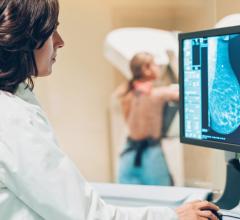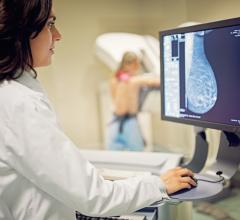
October 7, 2009 - Breast MRI was found to be a useful adjunctive tool when findings at conventional imaging, such as mammography, were equivocal, according to a study published in the online version of the October 2009 issue of the American Journal of Roentgenology.
The researchers from department of radiology, Breast Imaging Center, Cancer Institute, New York University School of Medicine, and Kaiser Permanente Riverside Medical Center, Riverside, CA, set out to evaluate the usefulness of MRI of the breast in cases in which mammographic or sonographic findings are inconclusive.
They retrospectively reviewed images from 115 MRI examinations of the breast performed from 1999 to 2005 for the indication of problem-solving for inconclusive findings on a mammogram. Forty-eight of the 115 women (41.8 percent) were at high risk. The investigators discerned whether sonography or MRI was used as an adjunctive tool and correlated the findings with those in the pathology database.
The researchers noted that equivocal findings most frequently leading to MRI were asymmetry and architectural distortion. No suspicious MRI correlate was found in 100 of 115 cases (87 percent). These cases were found stable at follow-up mammography or MRI after a mean of 34 months. Fifteen enhancing masses (13 percent) that corresponded to the mammographic abnormality were seen on MR images. All masses identified at MRI were accurately localized for biopsy, and six malignant lesions were identified. Four of six malignant tumors were seen in one mammographic view only; two were seen on second-look ultrasound images. MRI had a sensitivity of 100 percent and compared with mammography had significantly higher specificity (91.7 percent vs 80.7 percent, p = 0.029), positive predictive value (40 percent vs 8.7 percent, p = 0.032), and overall accuracy (92.2 percent vs 78.3 percent, p = 0.0052). Eighteen incidental lesions (15.7 percent) were detected at MRI, and all were subsequently found benign.
In their conclusion, the researchers suggested: “strict patient selection criteria should be used because of the high frequency of incidental lesions seen on MR images.”
Reference: Moy, Linda, et. al. Is Breast MRI Helpful in the Evaluation of Inconclusive Mammographic Findings? DOI:10.2214/AJR.08.1229. AJR 2009; 193:986-993.
For more information: www.ajronline.org


 July 24, 2024
July 24, 2024 








